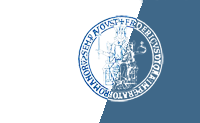Esposito, Gianpiero (2015) Systematic innovation - tools and methods supporting the concept design process. [Tesi di dottorato]
Anteprima |
Testo
Systematic Innovation.pdf Download (3MB) | Anteprima |
| Tipologia del documento: | Tesi di dottorato |
|---|---|
| Lingua: | English |
| Titolo: | Systematic innovation - tools and methods supporting the concept design process |
| Autori: | Autore Email Esposito, Gianpiero espogian@gmail.com |
| Data: | Marzo 2015 |
| Numero di pagine: | 101 |
| Istituzione: | Università degli Studi di Napoli Federico II |
| Dipartimento: | Ingegneria Industriale |
| Scuola di dottorato: | Ingegneria industriale |
| Dottorato: | Ingegneria dei sistemi meccanici |
| Ciclo di dottorato: | 27 |
| Coordinatore del Corso di dottorato: | nome email Bozza, Fabio fabio.bozza@unina.it |
| Tutor: | nome email Di Gironimo, Giuseppe [non definito] |
| Data: | Marzo 2015 |
| Numero di pagine: | 101 |
| Parole chiave: | Systematic innovation; concept design; analytic hierarchy process; discrete event simulation; TRIZ; virtual reality; ergonomics; fusion engineering; forest harvesting |
| Settori scientifico-disciplinari del MIUR: | Area 09 - Ingegneria industriale e dell'informazione > ING-IND/15 - Disegno e metodi dell'ingegneria industriale |
| Depositato il: | 13 Apr 2015 10:44 |
| Ultima modifica: | 29 Set 2015 08:11 |
| URI: | http://www.fedoa.unina.it/id/eprint/10183 |
| DOI: | 10.6092/UNINA/FEDOA/10183 |
Abstract
Concept design is a complex and iterative process in which design tasks are highly interdependent. Such process should reflect the specific design re-quirements, objectives and constraints applicable to the product. However, while design freedom is at its maximum in early design stage, product knowledge is only partially known initially and is changing over time. The aim of this work was the integration of methods to improve three areas belonging to the concept design stage. The first is the effective determination of requirements at the beginning of a project, given that all subsequent steps are dependent upon the completeness, ac-curacy and specificity of these requirements. Early requirements should be trans-lated effectively into technical characteristics. The second is the systematically generation of innovative concept features that should be able to solve design con-tradictions. The third is the support of the selection of the most feasible solutions based on multi-criteria decision making techniques, relying on tools such as con-cept evaluation in a virtual environment, and process simulation software. We worked on six different case studies related to two very different subjects: fusion engineering and forest harvesting. The distance between the topics helped to prove the general efficacy of the methodological instruments considered in this work. The use of quality function deployment, as well as the axiomatic design approach, proved to be a viable systematic way to achieve solutions in complex design situations, limiting the risks arising from the lack of requirements. In this context, TRIZ provided the valuable contribution to overcome technical issues found in previous design phases. The simultaneous comparison of product alterna-tives in an immersive virtual reality environment, together with the use of the ana-lytic hierarchy process, has speeded up the concept review process. The use of stochastic models in discrete event simulations allowed comparing product con-cepts in terms of the impact on the process in which they need to be integrated.
Downloads
Downloads per month over past year
 Loading...
Loading...Actions (login required)
 |
Modifica documento |






